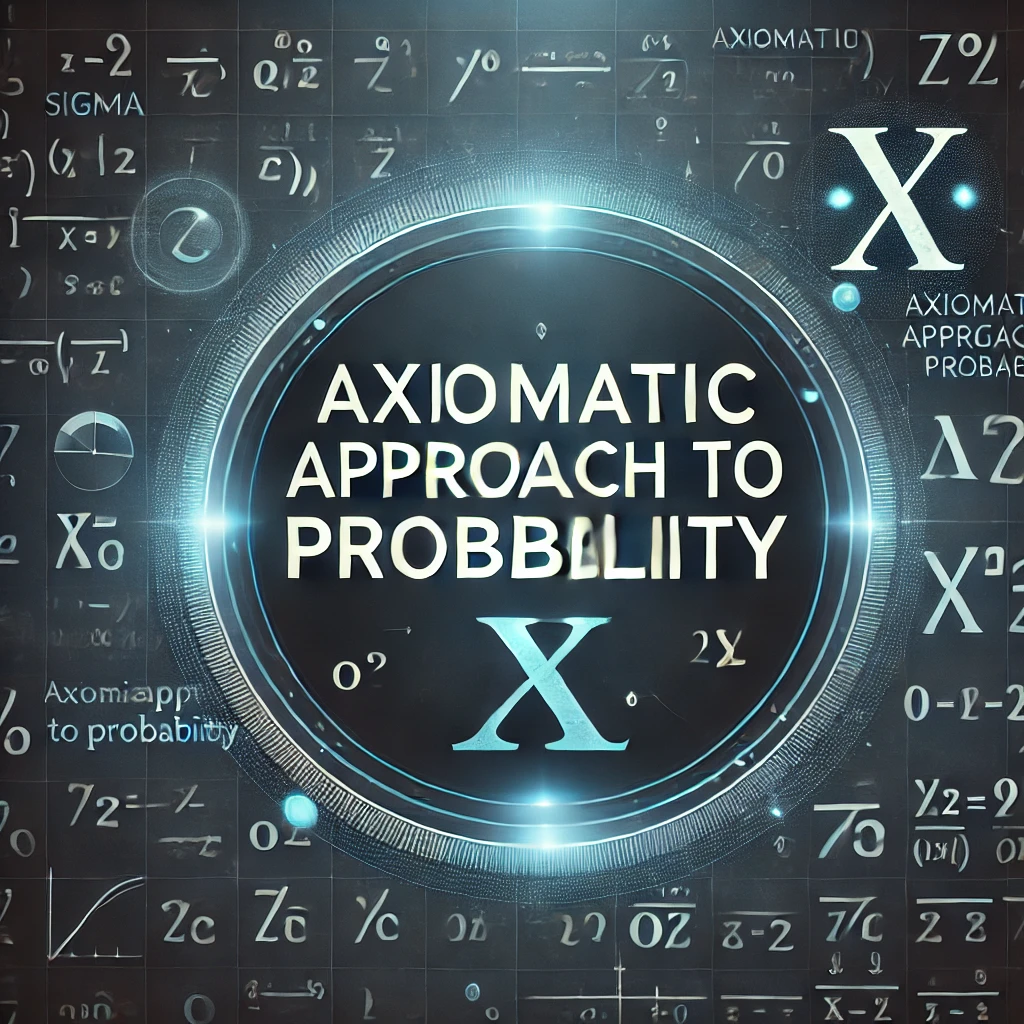Axiomatic Approach to Probability
Data Science and A.I. Lecture Series
Axiomatic Approach to Probability
Definition:
- Let \( S \) be a sample space for a random experiment.
- Let \( A \) be an event that is a subset of \( S \).
- \( P(A) \) is called a probability function if it satisfies the following axioms:
Axioms of Probability
- Non-Negativity: \( P(A) \geq 0 \) for all \( A \subseteq S \).
- Normalization: \( P(S) = 1 \).
- Additivity: If \( A_1, A_2, \dots \) are mutually disjoint events, then:\[
P(A_1 \cup A_2 \cup \cdots) = P(A_1) + P(A_2) + \cdots
\]
Implications of the Axioms
- The probability of an impossible event is zero: \( P(\emptyset) = 0 \).
- For any event \( A \), the probability of its complement is:\[
P(A^c) = 1 – P(A).
\] - If \( A \subseteq B \), then \( P(A) \leq P(B) \).
Set-Theoretic Interpretations of Events
- At least one of the events \( A \) or \( B \) occurs: \( A \cup B \).
- Both events \( A \) and \( B \) occur: \( A \cap B \).
- Neither \( A \) nor \( B \) occurs: \( A^c \cap B^c \).
- Event \( A \) occurs and \( B \) does not occur: \( A \cap B^c \).
- Exactly one of the events \( A \) or \( B \) occurs: \( (A \cap B^c) \cup (A^c \cap B) \).
- Not more than one of the events \( A \) or \( B \) occurs: \( (A^c \cap B^c) \cup (A \cap B^c) \cup (A^c \cap B) \).
Some Results Using Probability Function
- Probability of the impossible event is zero: \( P(\emptyset) = 0 \).
- Probability of the complementary event: For any event \( A \), \( P(A^c) = 1 – P(A) \).
- Addition Rule for Two Events:\[
P(A \cup B) = P(A) + P(B) – P(A \cap B).
\] - Conditional Probability:\[
P(A | B) = \frac{P(A \cap B)}{P(B)} \quad \text{if } P(B) > 0.
\] - Independence of Events: Two events \( A \) and \( B \) are independent if:\[
P(A \cap B) = P(A) \cdot P(B).
\]
Process to Prove Results Using Probability Function
- To prove \( P(\emptyset) = 0 \):
- By the Additivity Axiom, \( P(S \cup \emptyset) = P(S) + P(\emptyset) \).
- Since \( S \cup \emptyset = S \) and \( P(S) = 1 \), we get \( 1 = 1 + P(\emptyset) \).
- Thus, \( P(\emptyset) = 0 \).
- To prove \( P(A^c) = 1 – P(A) \):
- We know that \( A \cup A^c = S \) and \( A \cap A^c = \emptyset \).
- By the Additivity Axiom, \( P(A \cup A^c) = P(A) + P(A^c) \).
- Since \( P(A \cup A^c) = P(S) = 1 \), we get \( 1 = P(A) + P(A^c) \).
- Thus, \( P(A^c) = 1 – P(A) \).
- To prove \( P(A \cup B) = P(A) + P(B) – P(A \cap B) \):
- By the definition of union, \( A \cup B = A + B – (A \cap B) \).
- Using the Additivity Axiom, \( P(A \cup B) = P(A) + P(B) – P(A \cap B) \).
Video
Reach PostNetwork Academy
- Website: www.postnetwork.co
- YouTube Channel: www.youtube.com/@postnetworkacademy
- Facebook Page: www.facebook.com/postnetworkacademy
- LinkedIn Page: www.linkedin.com/company/postnetworkacademy
